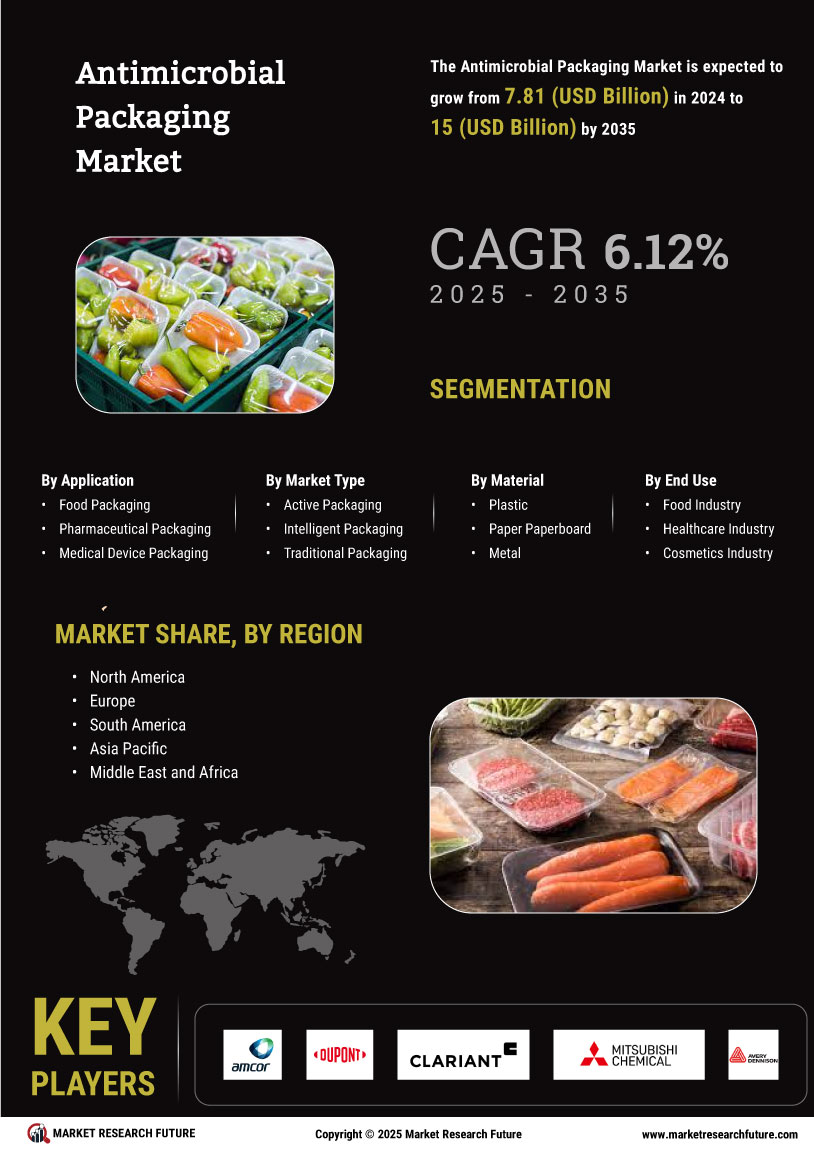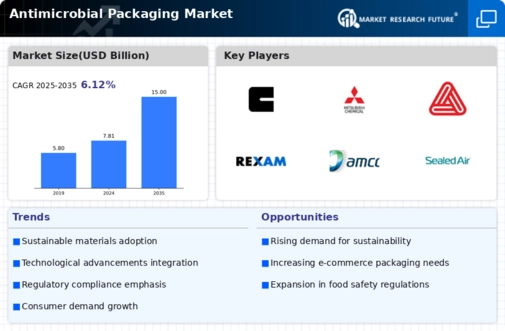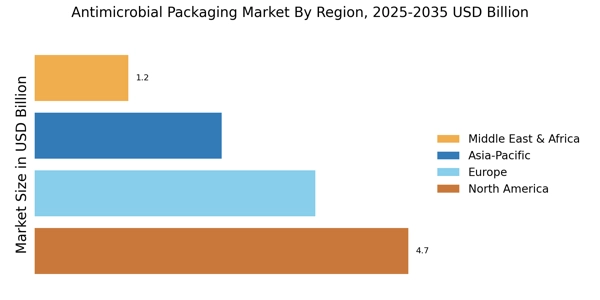Regulatory Support for Food Safety Standards
The Antimicrobial Packaging Market is significantly influenced by regulatory frameworks that emphasize food safety standards. Governments and health organizations are implementing stringent regulations to ensure that food products are safe for consumption. This regulatory support is likely to drive the adoption of antimicrobial packaging solutions, as they can effectively reduce microbial contamination and extend shelf life. For instance, regulations mandating the use of safe packaging materials in the food sector are expected to bolster the market, as manufacturers seek compliant solutions. The anticipated growth in the market is projected to reach USD 25 billion by 2027, driven by these regulatory initiatives.
Growing Demand from the Pharmaceutical Sector
The Antimicrobial Packaging Market is increasingly driven by the growing demand from the pharmaceutical sector. As the need for safe and effective drug delivery systems intensifies, pharmaceutical companies are seeking packaging solutions that can prevent contamination and ensure product integrity. Antimicrobial packaging plays a crucial role in this context, as it helps maintain the sterility of medical products and extends their shelf life. The pharmaceutical packaging segment is projected to account for a significant share of the overall market, with estimates suggesting it could reach USD 10 billion by 2026. This trend underscores the importance of antimicrobial solutions in safeguarding public health.
Rising Consumer Awareness of Health and Hygiene
The Antimicrobial Packaging Market is experiencing a notable surge in consumer awareness regarding health and hygiene. As individuals become increasingly conscious of the potential risks associated with foodborne illnesses and contamination, the demand for packaging solutions that offer antimicrobial properties is likely to rise. This heightened awareness is not only influencing purchasing decisions but also prompting manufacturers to innovate and incorporate antimicrobial agents into their packaging materials. According to recent estimates, the market for antimicrobial packaging is projected to grow at a compound annual growth rate of approximately 6.5% over the next few years, reflecting the increasing prioritization of health and safety in consumer choices.
Technological Innovations in Packaging Materials
The Antimicrobial Packaging Market is witnessing a wave of technological innovations that enhance the efficacy of antimicrobial properties in packaging materials. Advances in nanotechnology and the development of bio-based antimicrobial agents are enabling manufacturers to create more effective and sustainable packaging solutions. These innovations not only improve the performance of packaging but also align with the growing demand for environmentally friendly products. As a result, the market is likely to see an influx of new products that cater to both antimicrobial efficacy and sustainability. The integration of these technologies is expected to contribute to a market growth rate of around 7% annually over the next five years.
Expansion of E-commerce and Online Food Delivery Services
The Antimicrobial Packaging Market is also benefiting from the expansion of e-commerce and online food delivery services. As more consumers turn to online platforms for their food purchases, the need for packaging that ensures product safety during transit becomes paramount. Antimicrobial packaging solutions are increasingly being adopted by e-commerce companies to mitigate the risks of contamination and spoilage. This trend is likely to drive market growth, as businesses recognize the value of providing safe and reliable packaging to enhance customer satisfaction. The e-commerce sector is expected to contribute significantly to the overall market, with projections indicating a growth rate of approximately 8% in the coming years.


















Leave a Comment